Naples & Athens Archaeological Museums
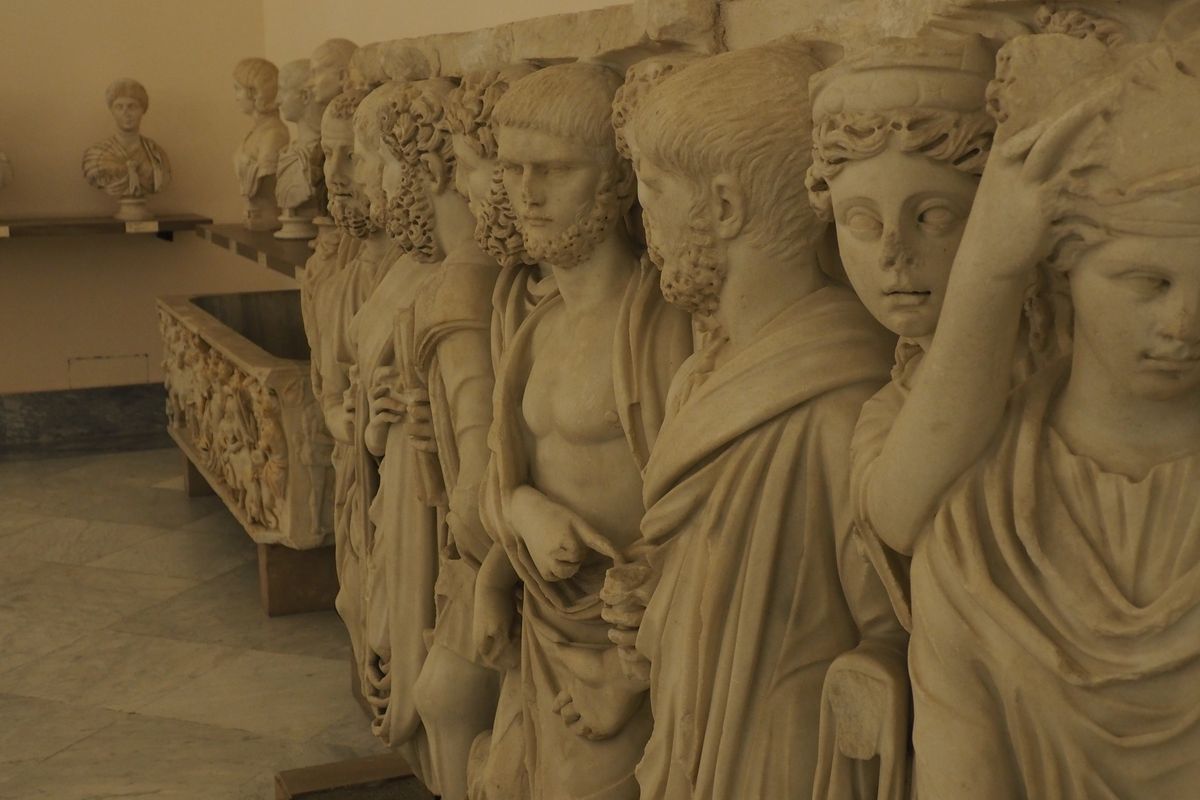
I've always had an obsession with ancient history, ever since I was a kid. There was something fascinating about it, the thought that past civilisations once existed and they've left us glimpses of what they once were, either as ruins or references in historical texts. As a teenager, I frequented the library at the main university in my city, which had an entire section for classical antiquity, reading texts by Plutarch, Suetonius, Aristotle and others (yes, my teenage self was a bit precocious). I never intended to pursue a career in ancient history, I just had an intense fascination with the whole field.
A lot of my teenage interests have remained with me, which is why on two previous trips (mostly fueled by my interest in seeing historical sites), I visited two prominent archaeological museums. The first one in Naples (Italy) and the second in Athens (Greece). I briefly referenced the Naples museum in a previous article about Caravaggio's paintings. I intended to write more about the museum, because it was an incredible experience. It's collection is mostly Roman, but also has Greek and Egyptian artifacts.
I knew of the Naples Archaeological Museum, and it's prominence as one housing well-preserved artifacts from nearby Pompeii, but I never investigated what it actually held. And I'm glad I didn't, because it meant I had a purely new experience, seeing things I'd known about for years, but didn't know they where in the museum.
If you're someone with an interest in ancient history, then you can't go wrong with visiting Italy. Of course you should visit Rome, but you should go out of your way to visit Naples, see Pompeii first, then go to the archaeological museum. It's an incredible experience, and is the closest thing you'll get to having a sense of what was an ancient civilisation.
I'm getting carried away, so I'll share some of my favourite photos, showcasing the type of artifacts in the museum. Afterwards I'll talk about the one in Athens.
The exterior of the Naples National Archaeological Museum is below, originally from the 16th century, it went through numerous changes, finally being established as a museum in 1777.

The entrance to the staircase that takes you up into the main levels is flanked by these Zeus-like statues. I didn't get their names or what era they're from, but most of the statues were around 100-300 AD.

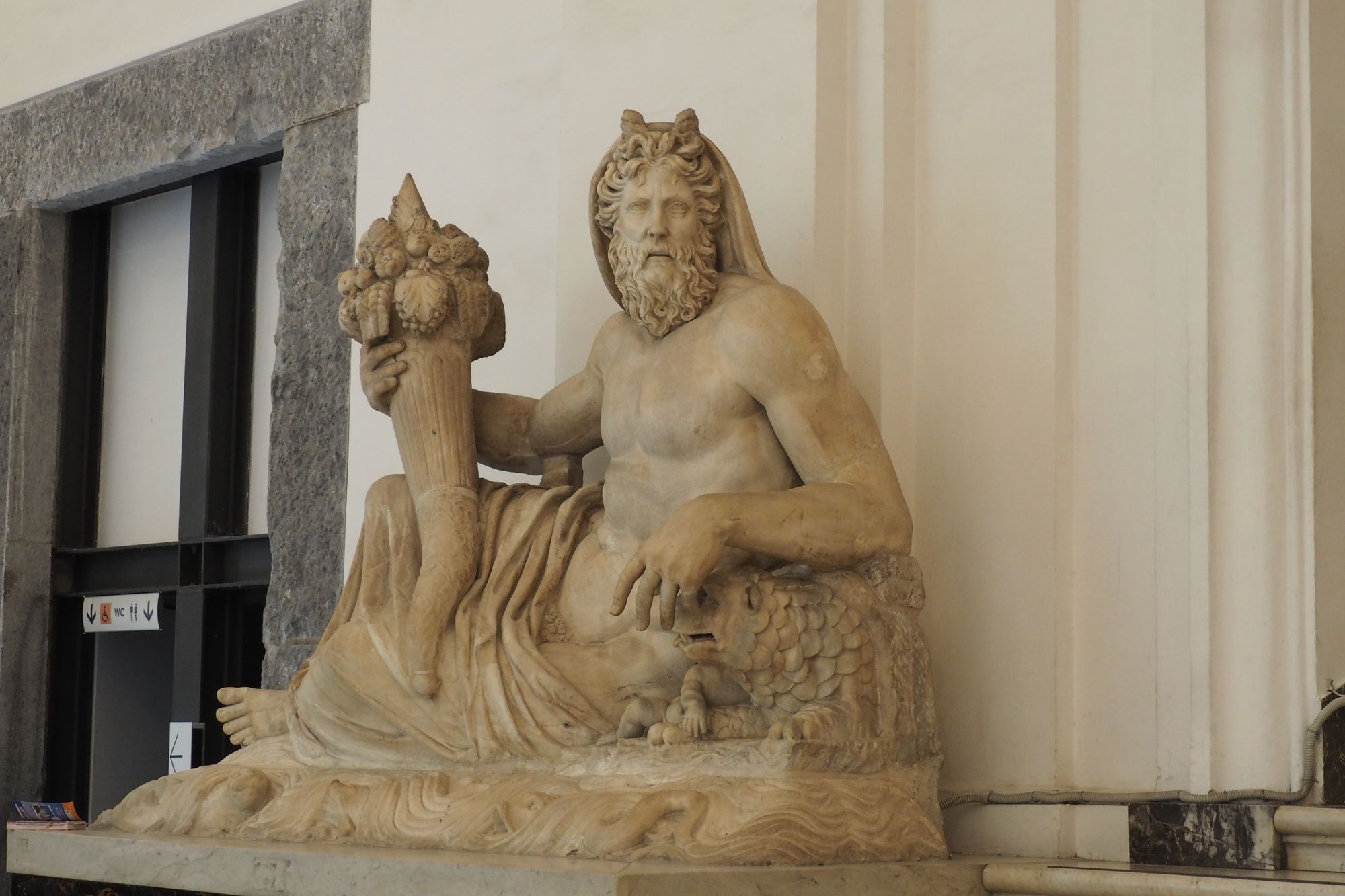
Most of the statues are Roman copies of Greek originals, such as this one from the 2nd century AD (original is from 2nd century BC).

Notable figures that I'm sure we've all come across in various media, such as Aphrodite below, 2nd century AD copy of Greek original from 3rd-2nd century BC.
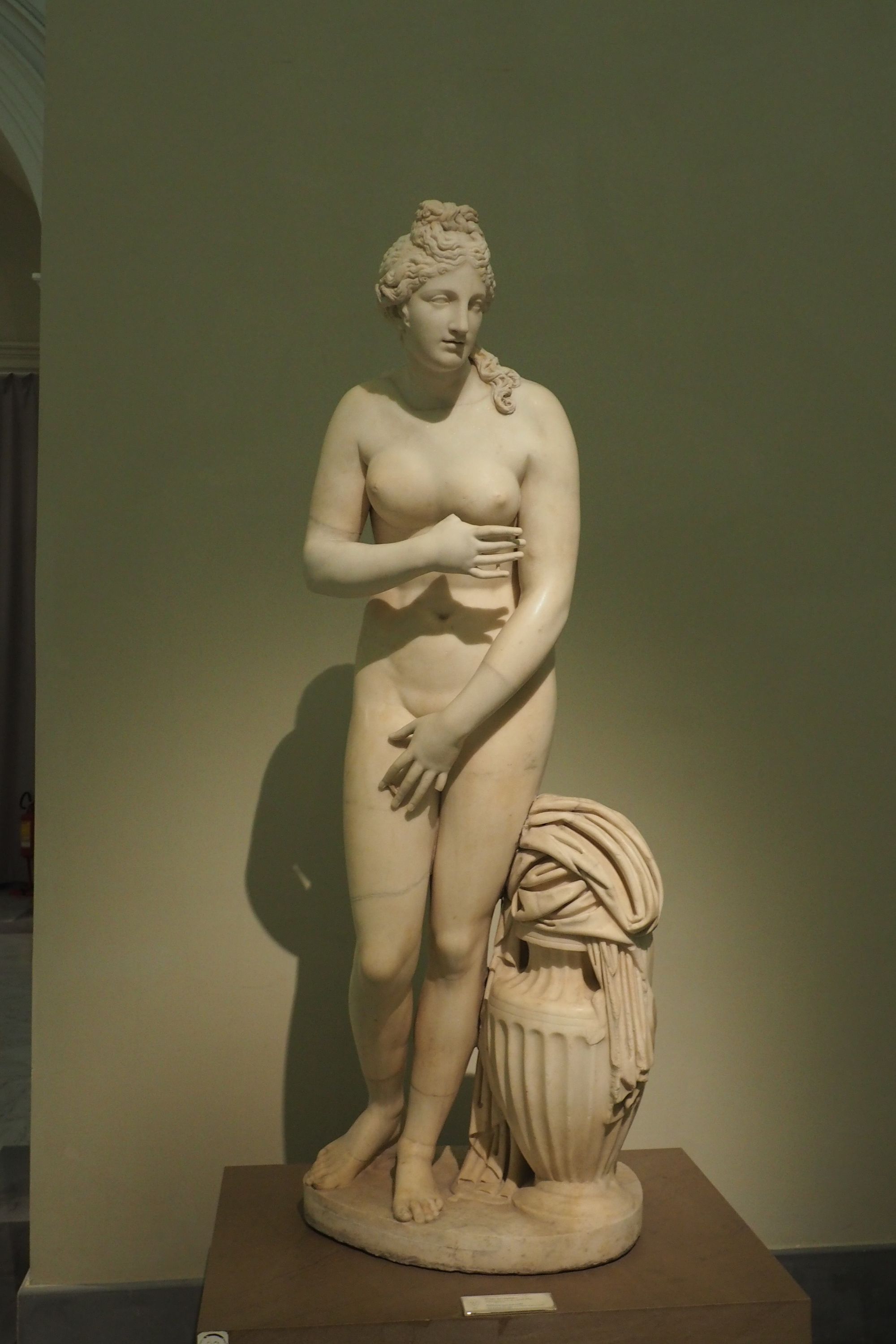
Mythological stories cut into marble statues were all the rage in Pompeii, below is Pan teaching Daphnis to play the flute. Another Roman copy, but from 100 BC.

I didn't get the name of this one, but nevertheless, it looks awesome.

A towering, prominent statue of Hercules at rest. Roman copy, 2nd-early 3rd centuries AD, Greek original 4th century BC.

Below is a sarcophagus with the myth of Prometheus and the creation of man. Early 4th century AD.
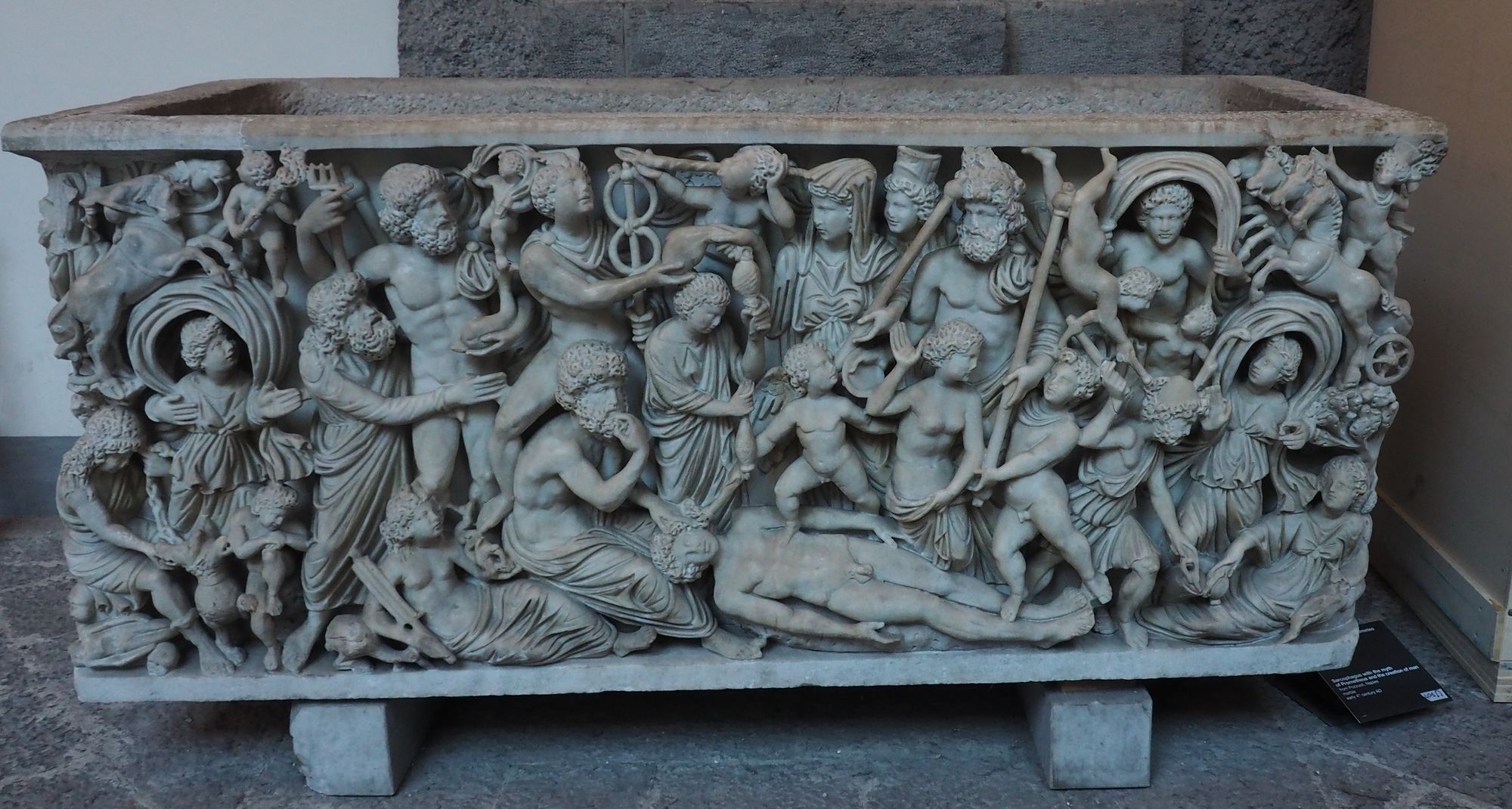
Next are some mosaics/paintings excavated from Pompeii, most are so well preserved, which makes them all the more incredible.
First notable mention goes to the famous Alexander Mosaic, from 100 BC, it depicts a battle between Alexander the Great and Darius III of Persia. You've likely seen this elsewhere, but I had no idea it would be at the museum. It's towards the back on a large wall (it measures 2.72 x 5.13 metres), and is the definition of breathtaking.

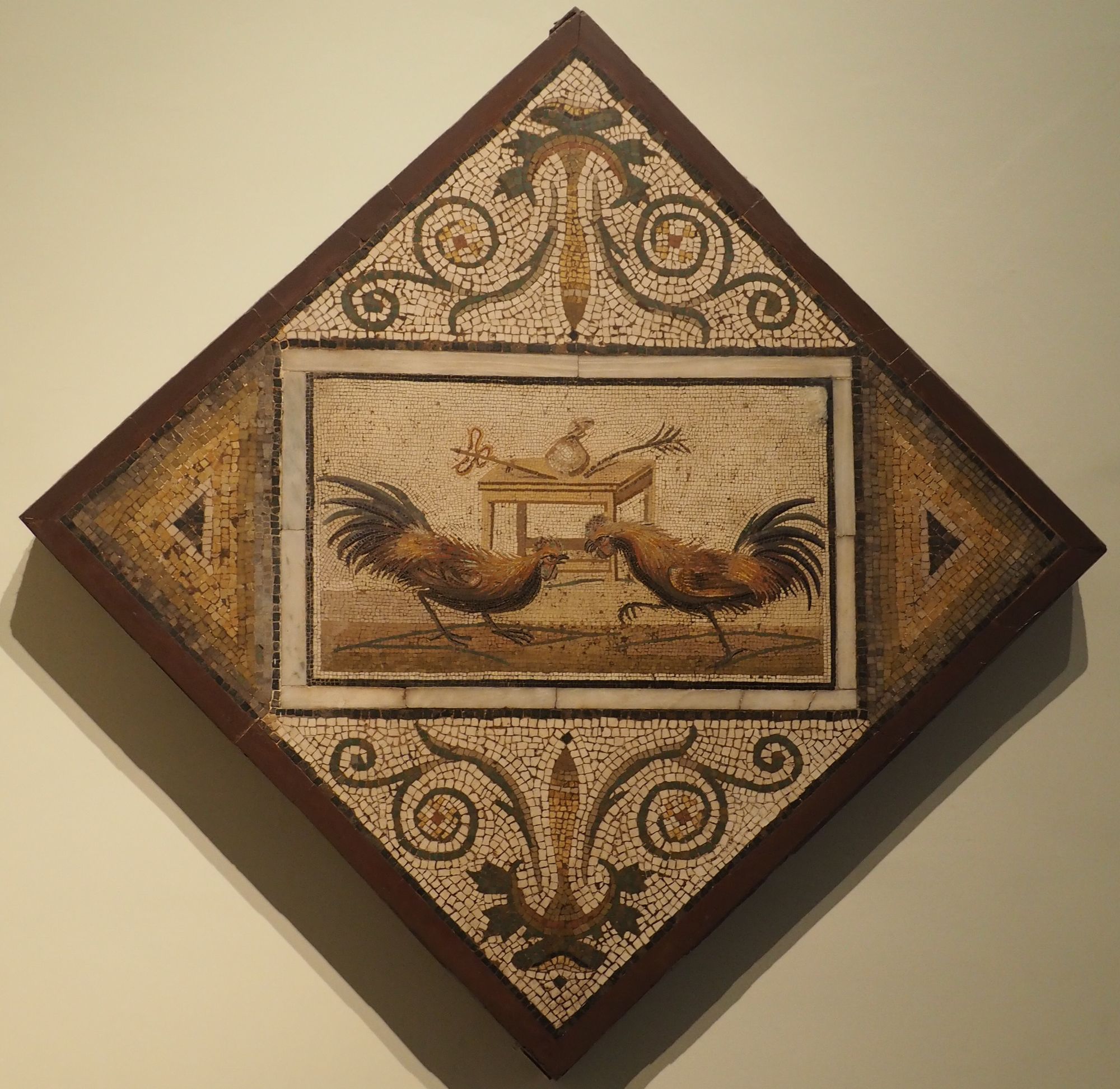
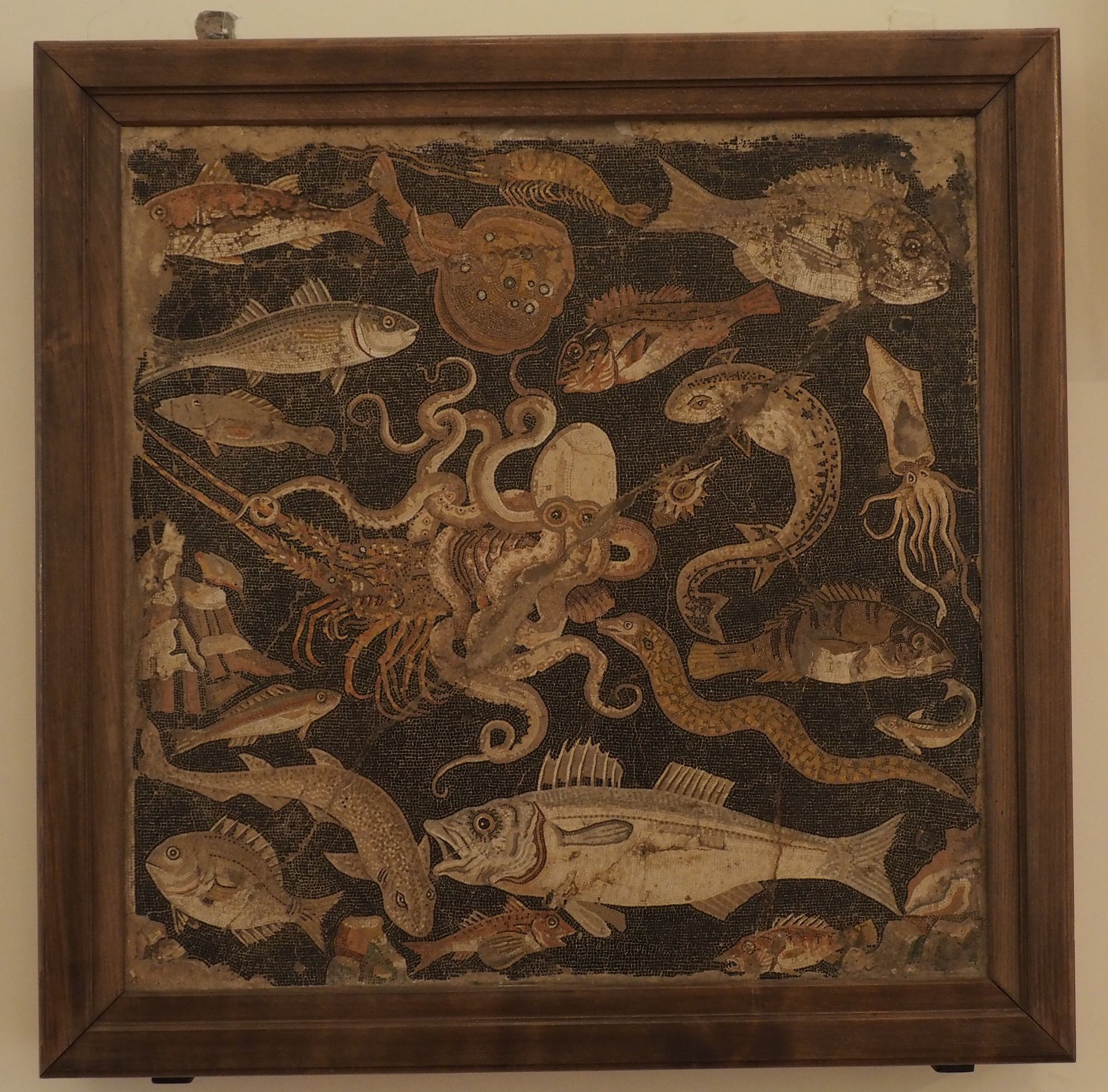
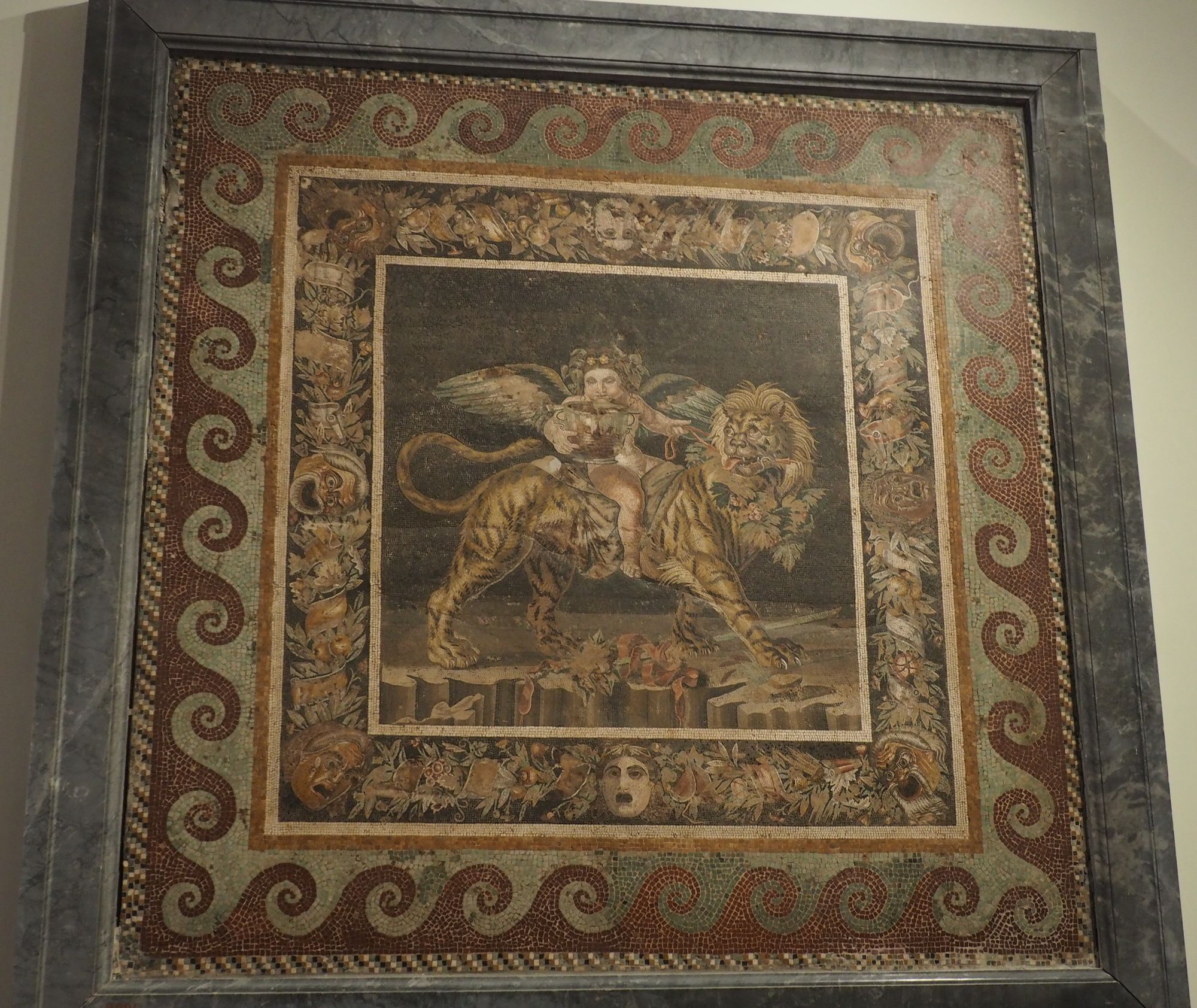



If you go to the upper level, you'll find a large open room, the ceiling adorned with a beautiful fresco, and on the other side a statue of Atlas.

The museum has so much more, but I'll finish off with me standing next to a statue of what I think is Zeus, just to give you an idea of how massive these sculptures once were.
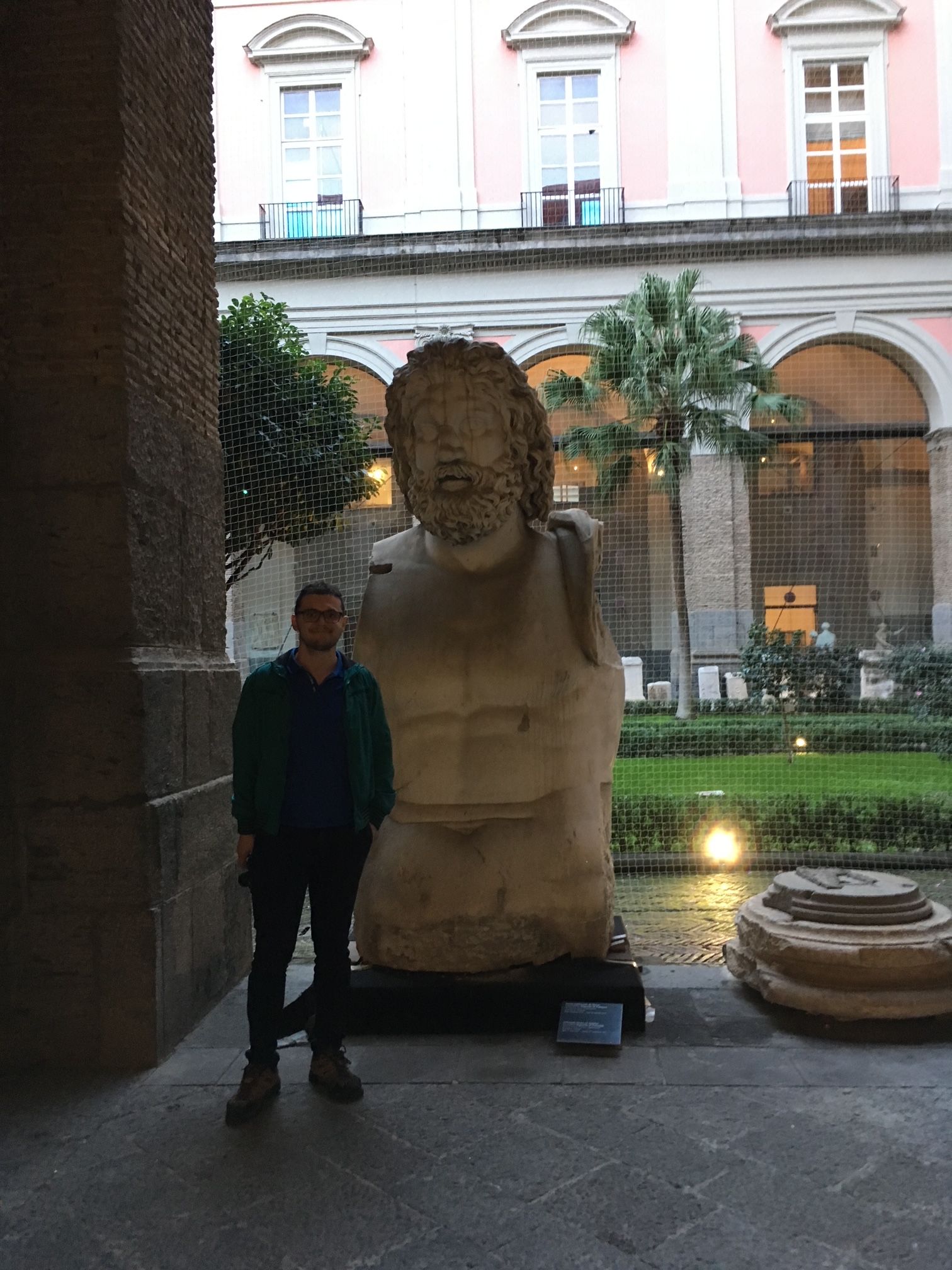
Archaeological Museum of Athens
I went to Athens on a separate trip, and I think 3 days is enough to spend in the city to see all the main sites. Not to put it down, but Athens didn't really offer much outside of site seeing. The city has two major museums, there's the Acropolis Museum and the Archaeological museum. I went to both, but for some reason I didn't take any photos from the Acropolis Museum. There's a lot of artifacts from the Greek bronze age, classical Greece and the Roman era.
Below you can see the ruins of the Temple of Olympian Zeus and the Parthenon in the background. The temple is massive, and it's incredible how these structures were built so long ago. See the photo of me standing in front of it to get a scale for its size.
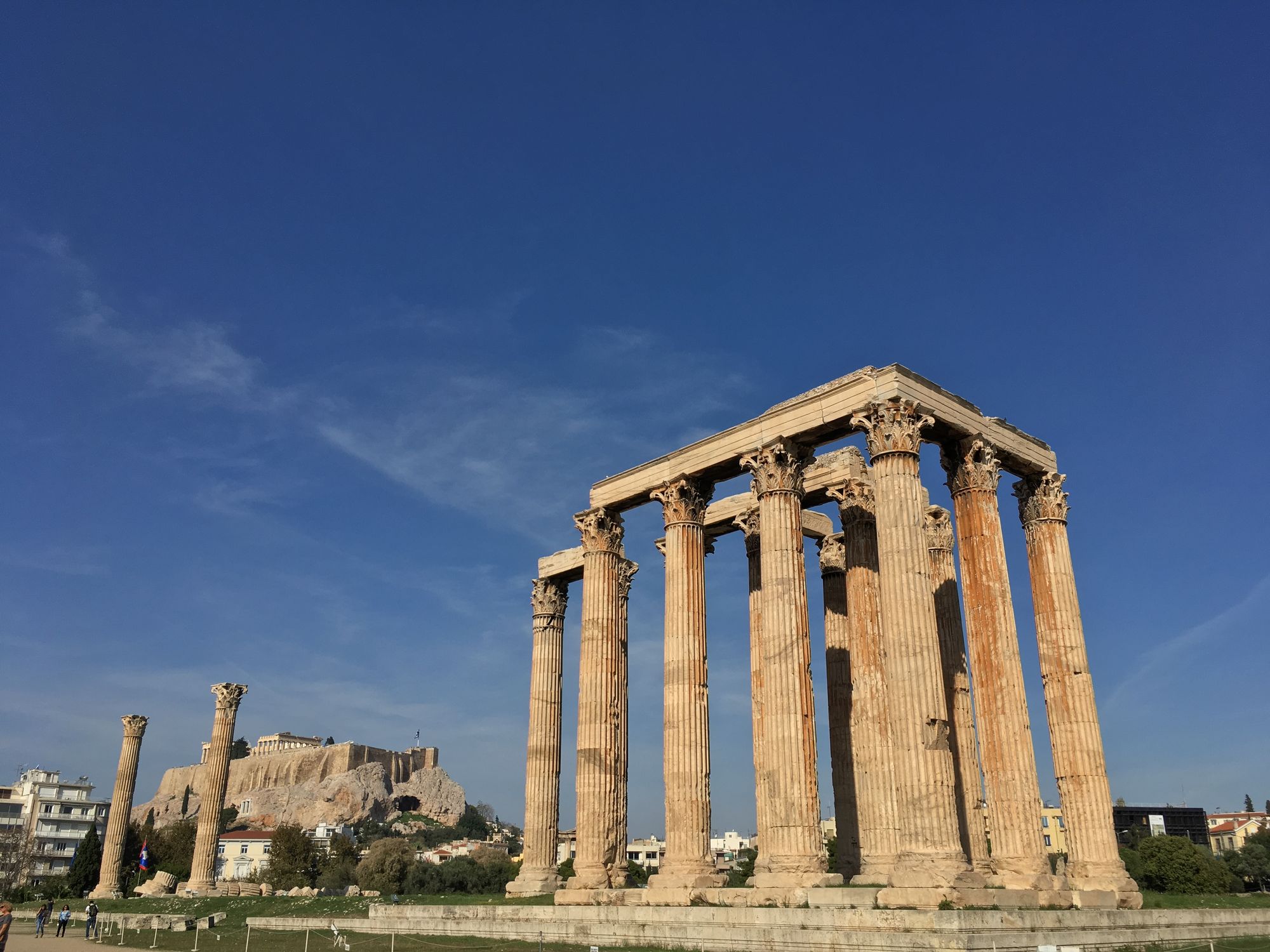
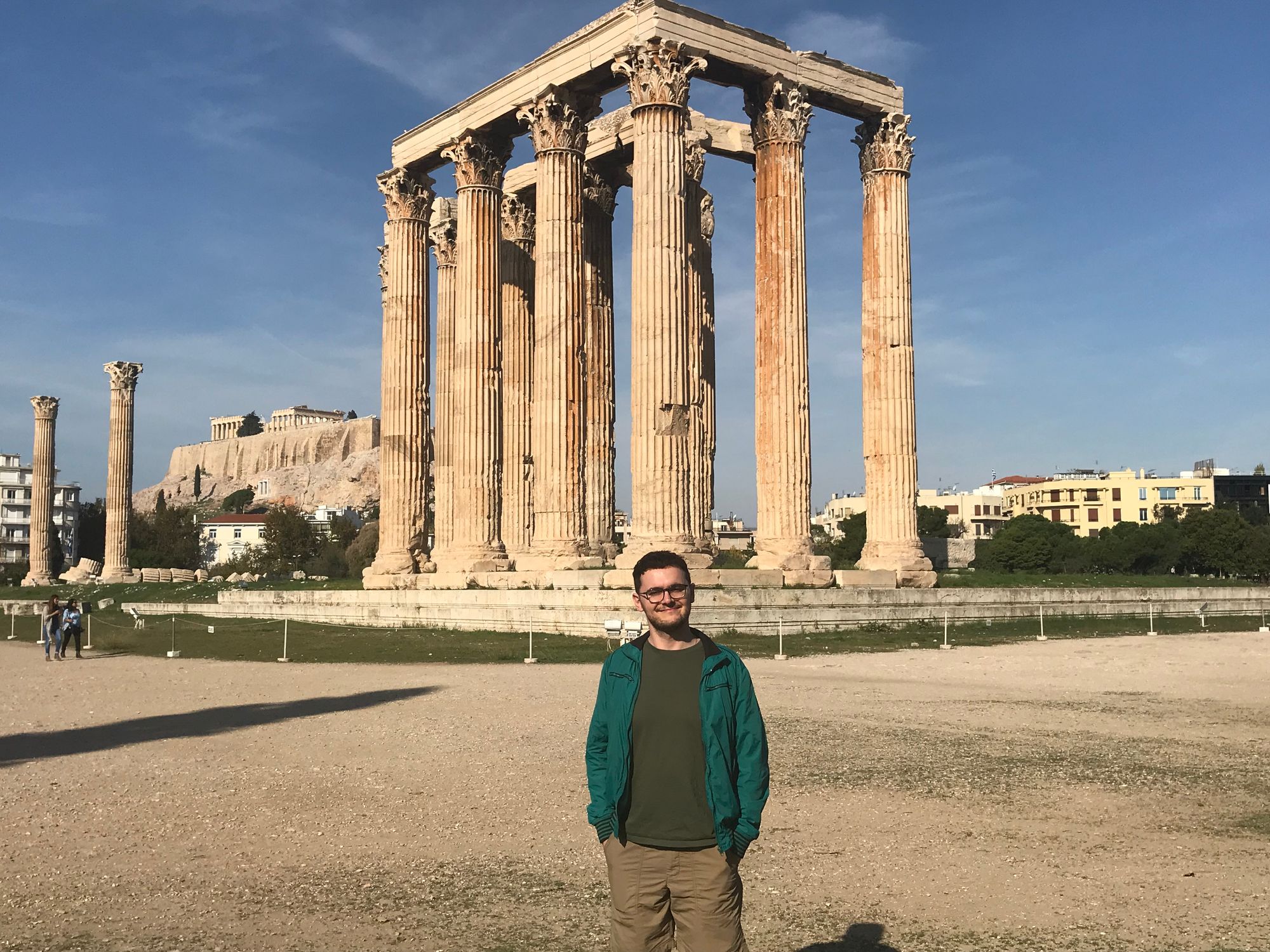
I'll be honest, I wasn't as impressed with the Athens museum as I was with the one in Naples. Yes, it has some prominent artifacts, but Naples stood out more because of its collection of well preserved artifacts from Pompeii. The city was literally frozen in time for centuries, so of course it's going to offer more. Athens has always been on the crossroads of waring empires, so it's had to go through multiple destructions, declines and whatnot. Having said that, it's still worth visiting. Unfortunately I didn't take many photos.

One of the most notable statues in the museum is the Bronze statue of Zeus or Poseidon. It was found in the sea of Cape Artemision in northern Euboea (this is an island north of Athens). It's dated to 460BC, and a perfect example of the great artisanship typical of the classical period.

Probably the most exciting thing I've seen in person is the Antikythera Mechanism. It's been described as an 'ancient computer' because of its use of gears in calculating astronomical phenomena. It's been dated to 100 BC, and is the best example displaying the ingenuity that existed in a time many of us might think was 'primitive'. A series of photos below.
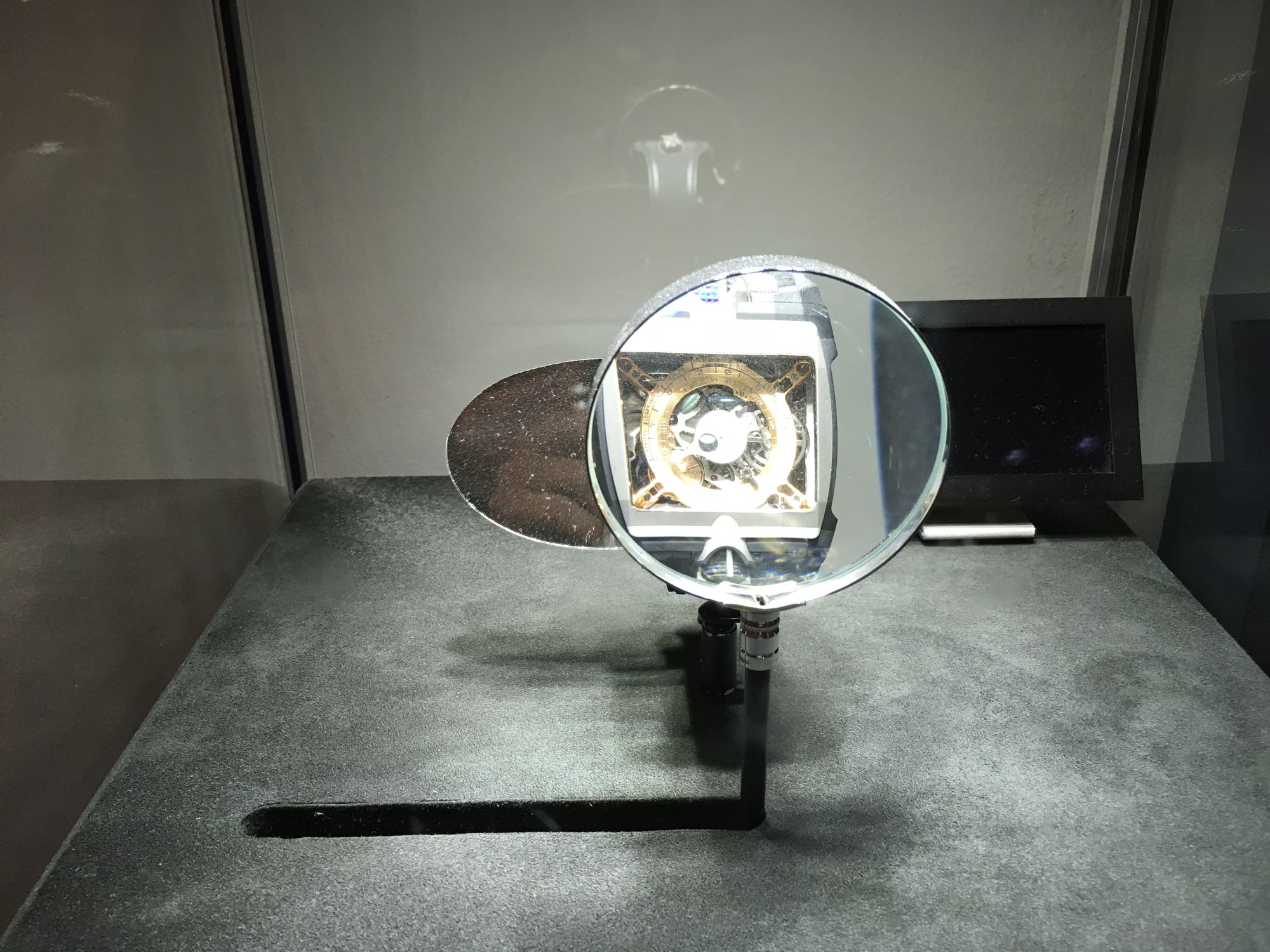
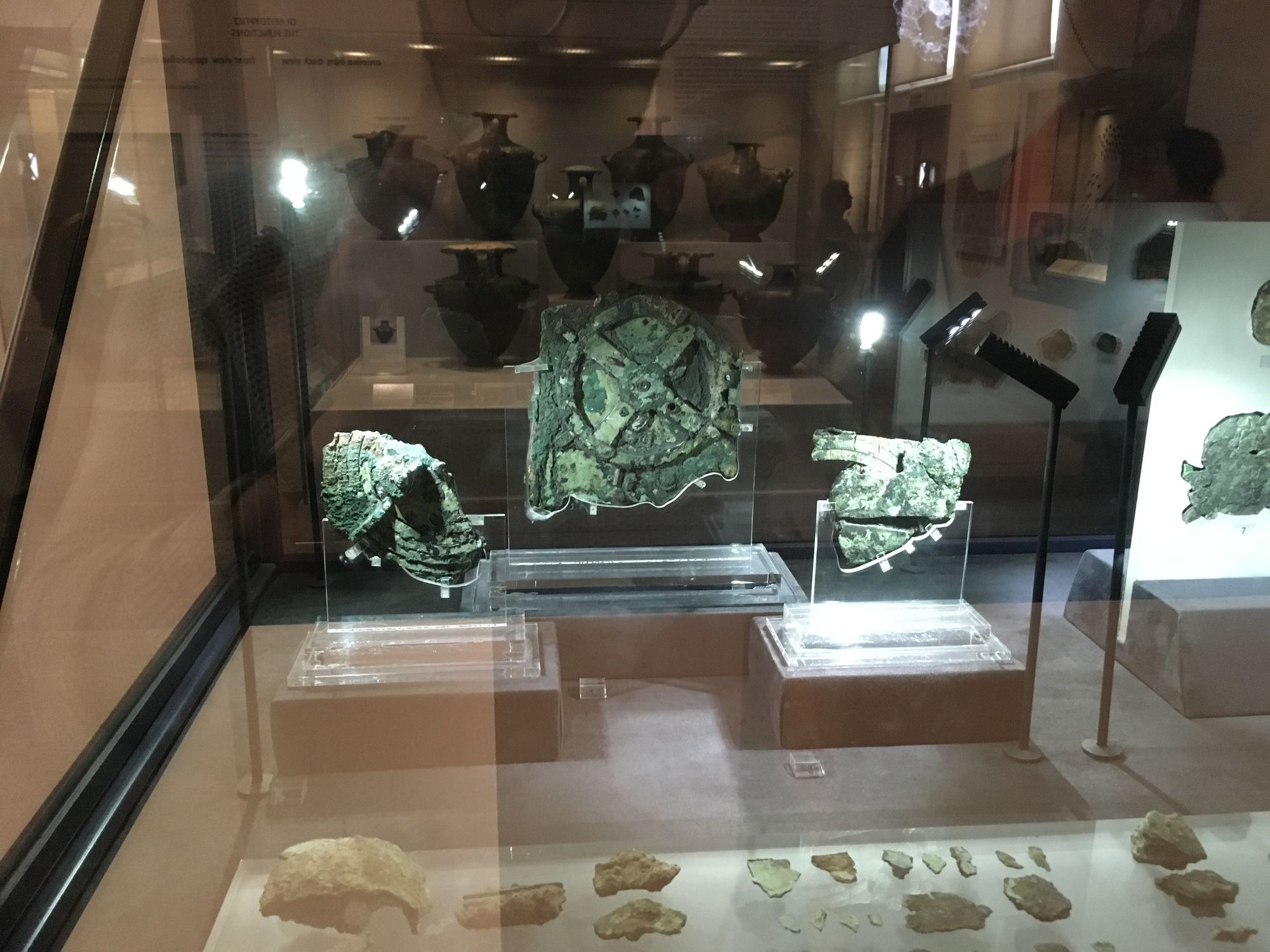

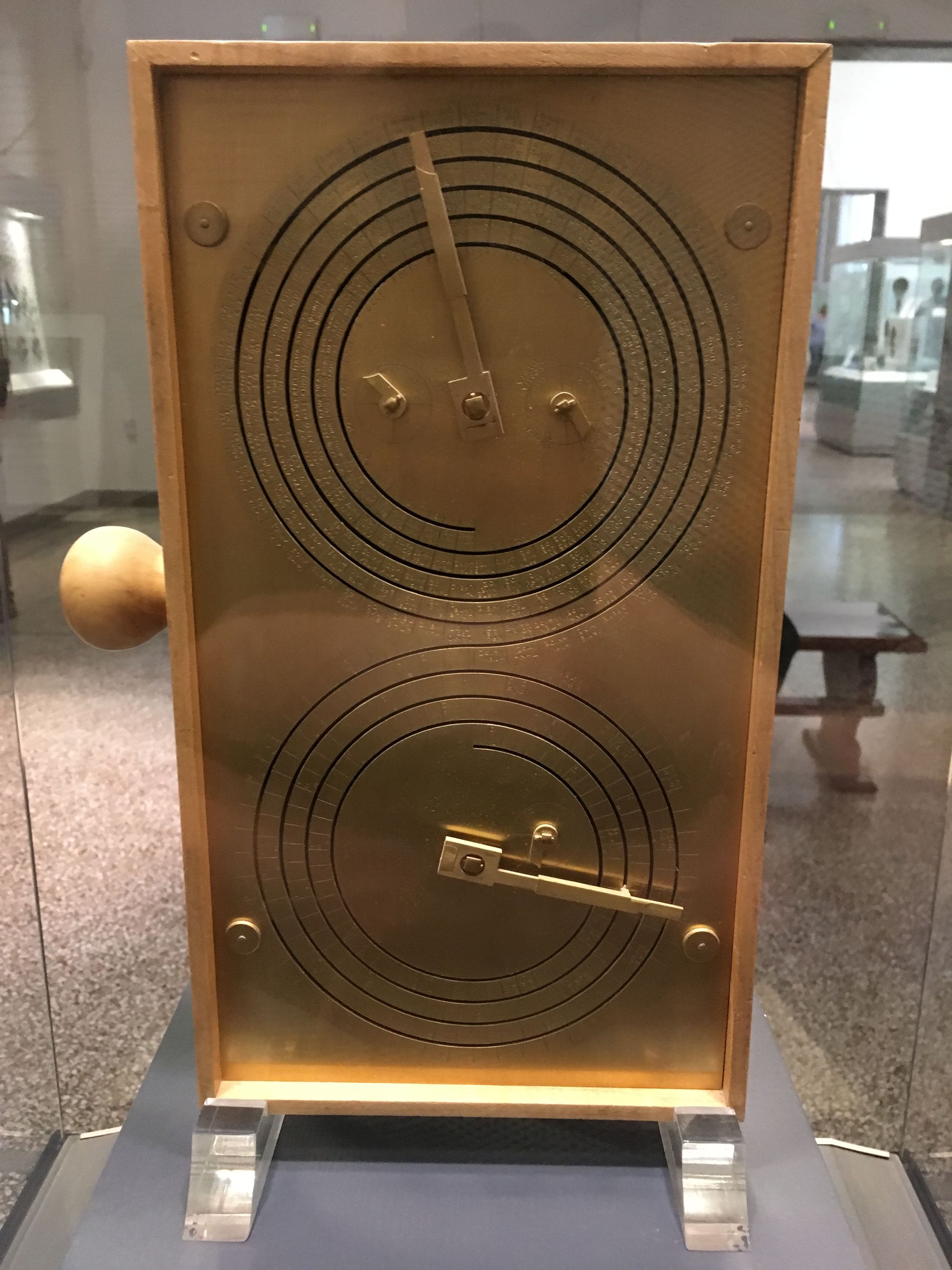
Another statue of Aphrodite, although this one is Roman in origin, however still based off a Greek original. 2nd century AD.
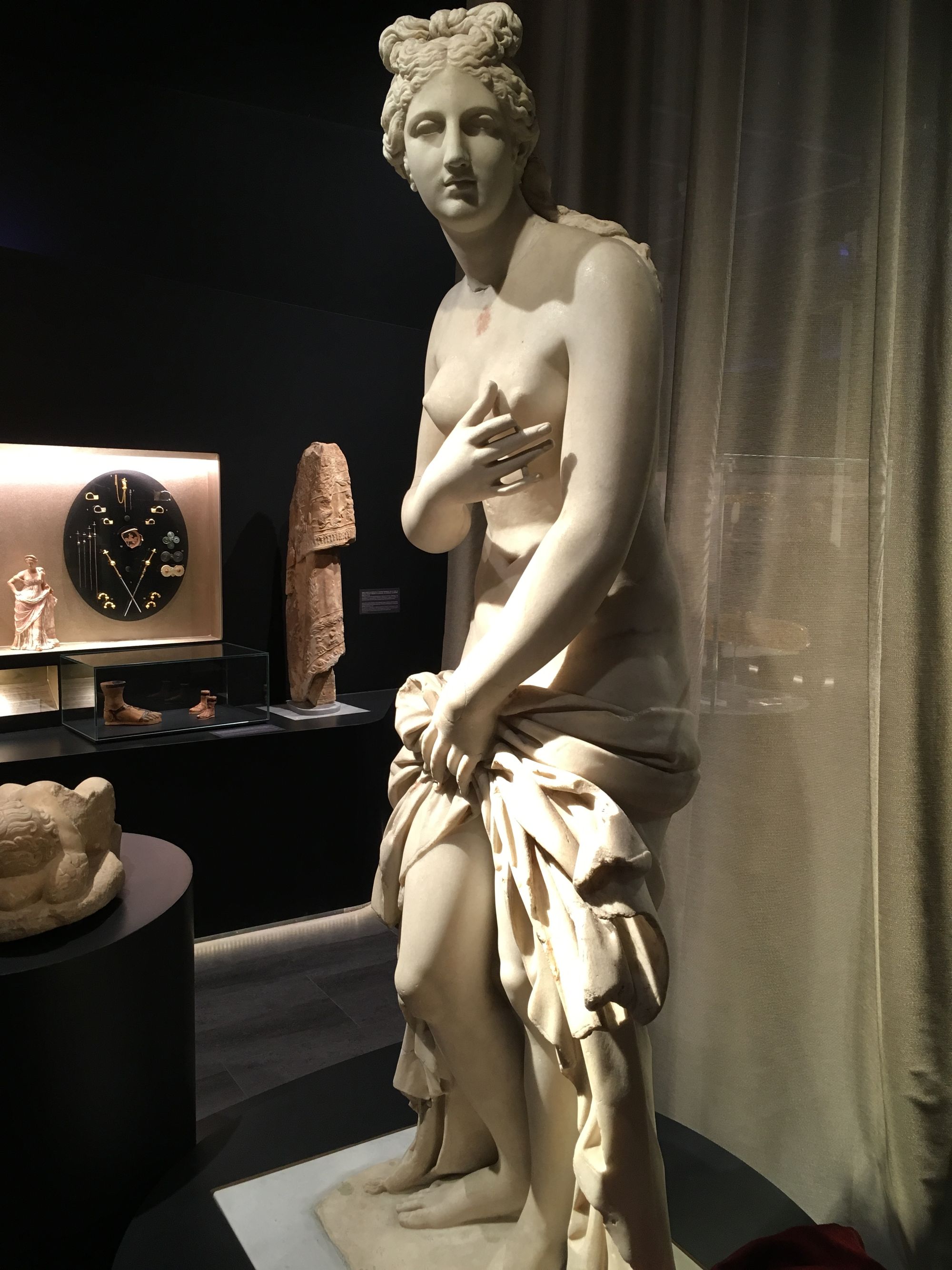
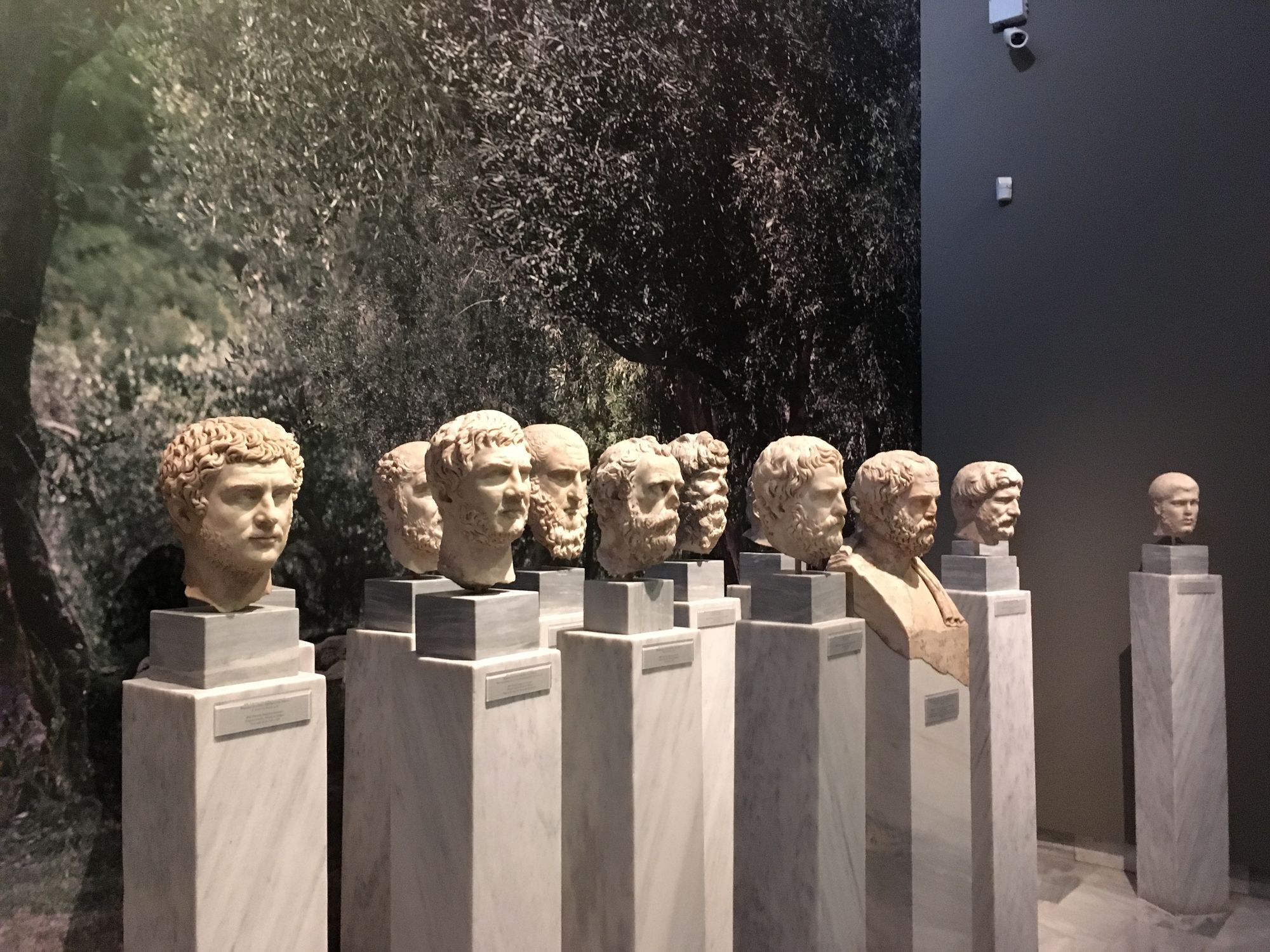
Below is a well preserved portrait bust of Antinoos. He's described as "the youth Antinoos of Bithynia, in Asia Minor, was the favorite of the emperor Hadrian" I'll leave that there, you can probably figure out the rest. 2nd century AD.
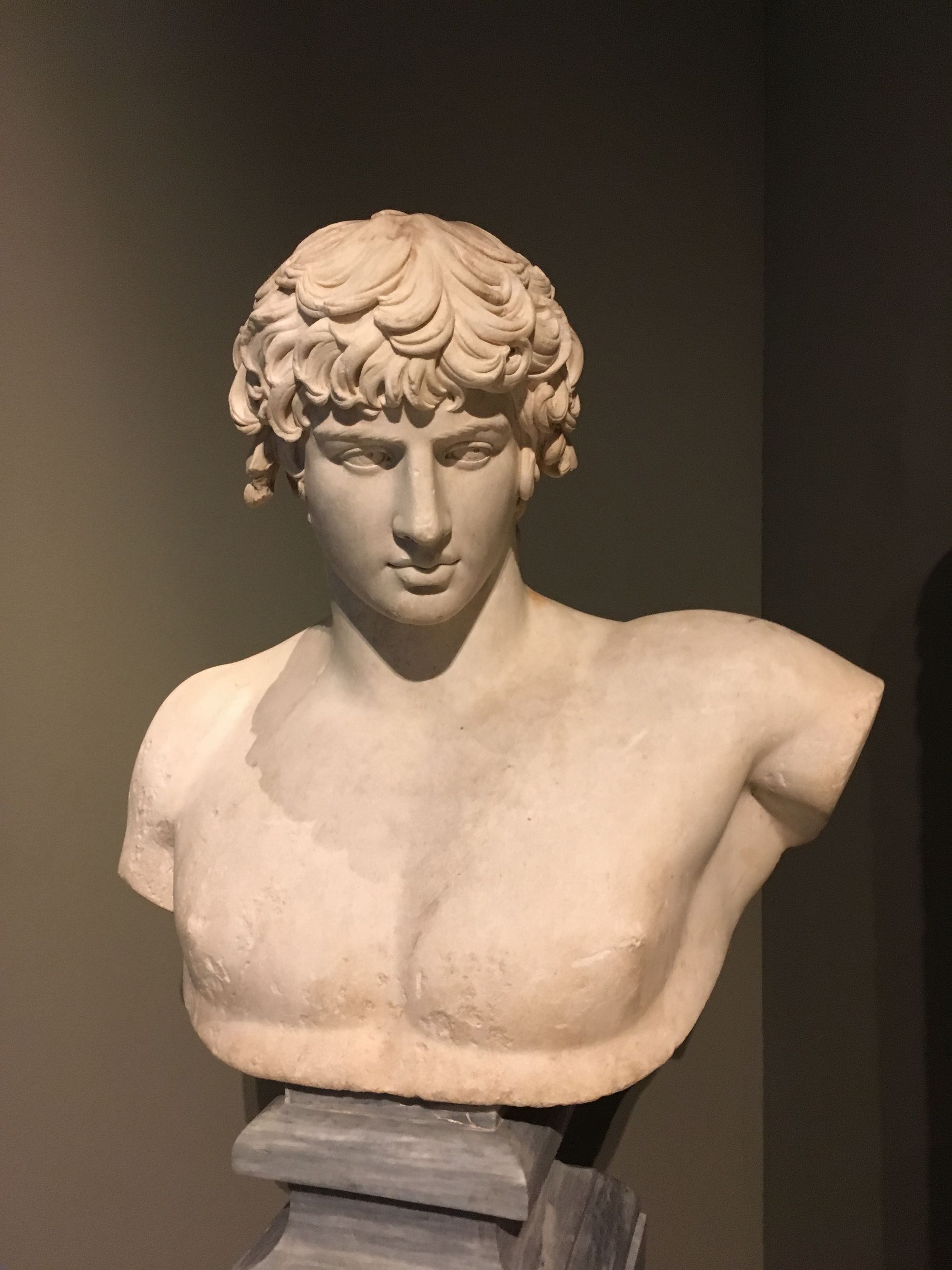
Less well known is this votive relief from 440 BC. It's the largest found, and is dedicated to the sanctuary of Demeter and Kore at Aleusis.

Its description reads:
...it represents the Eleusinian deities in a scene of mysteriac ritual. At left, Demeter, clad in a peplos and holding a scepter in her left hand, offers ears of wheat to Triptolemos, son of the Eleusinian King Keleos, to bestow on mankind. At right Persephone, clad in chiton and mantle and holding a torch, blesses Triptolemos with her right hand. The magnificence of the image and, particularly, the large scale of the relief suggest that it was not a simple votive dedication but rather associated with cult. The relief was apparently famous in antiquity and was copied in the Roman period.
There were other artifacts in the museum I wish I took a photo of, such as the Mask of Agamemnon, but I think at the time I wanted to avoid staring through my smartphone so much. In any case, Athens, much like Naples, is well worth visiting if you're a fan of all things ancient history.
